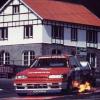Injector Response Times
Announcements
-
Similar Content
-
Latest Posts
-
Well found out it’s a 60th anniversary gtst from that it came with 205-55r15
-
Search for your VIN in gtr-registry.com and see what it left with from factory. There's 4.3:1 and 4.11:1 diff ratios IIRC, can't remember what models had what. Also could be tyre size, by factory the speedo reads a tad quicker >80 km/h but constantly out be 10 km/h is weird. Maybe someone wound the odometer back, and accidentally bumped the needle up?
-
Single 3.5", 5" metal body cat, centre offset oval muffler in the middle, large rear oval muffler straight through.
-





Recommended Posts
Create an account or sign in to comment
You need to be a member in order to leave a comment
Create an account
Sign up for a new account in our community. It's easy!
Register a new accountSign in
Already have an account? Sign in here.
Sign In Now